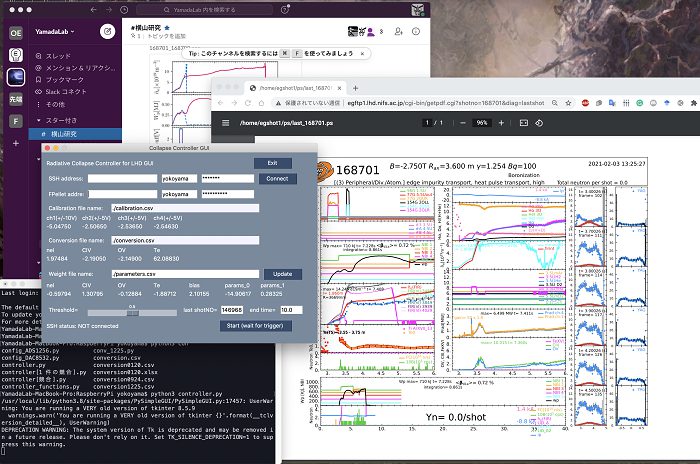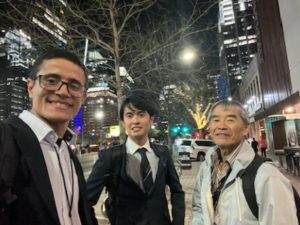
Hello. I’m Tatsuya Yokoyama, a second year doctoral student at Yamada Lab.
For the purpose of elucidating the decay phenomenon of fusion plasma, I am conducting research by making full use of a data-driven approach using machine learning techniques.
At the Yamada laboratory to which I belong, I mainly conduct experiments with the Large Helical Device (LHD) at the National Institute for Fusion Science (NIFS) in Toki City, Gifu Prefecture, and analyze the results.
In my previous blog (November 20th), I told you about the experiment at NIFS.
Since this experiment was under the state of emergency in early February, I participated in the experiment remotely.
Normally, you would sit in the control room of the LHD, grasp the plasma state while looking at the measurement data displayed on many monitors, and proceed with the experiment while consulting with the researchers and engineers who are also in the control room. I will continue.
In the case of remote, the place is the desk at home because I do not go to the control room first. Start your PC, put on your headset, and you’re ready to go. I usually do a lot of research at home, so this is like a routine every morning.
First of all, we will launch Zoom and enter a meeting that delivers announcements in the control room and images displayed on the monitor. When you hear the announcement, “It’s about to discharge … seconds …”, you feel as if you are in the control room.
Then we’ll launch Microsoft Teams and join an experimental group meeting to do today’s experiments. We will proceed with the experiment while keeping in touch with the teachers who are in charge of the experiment operation in the control room.
Furthermore, in this experiment, we tried plasma control using equipment installed in advance. I accessed the VPN (Virtual Private Network) provided by NFIS and operated the control computer using an SSH connection.
The image is the screen of my PC during such an experiment.
NIFS has had VPNs and experimental data servers in place before the Corona disaster, and by adding Zoom and Teams to these, you can smoothly participate in experiments even from remote locations. Thanks to that, I was able to proceed with my research relatively smoothly over the past year, even though my activities were restricted.
That said, Zoom only delivers the largest of the many monitors in the control room. In the first place, at home or in the laboratory, the number of PCs and monitors that can be used at one time is limited. You can see less information in real time than you actually are in the control room.
Remote experiments can be difficult, but they are a very convenient means that can be used not only for this corona disaster, but also for participating in experiments from overseas or when you are too busy to travel.
On the other hand, there are some aspects that cannot be compared to participating in experiments in the field. Sometimes you can get a new perspective by discussing while looking at the same monitor as the person who happened to be there in the laboratory.
I hope that you will be able to participate in the experiment again in the control room as soon as possible.
This page was automatically translated into English.
Please note that the translation system may not necessarily be accurate.
Thank you in advance for your kind understanding.







